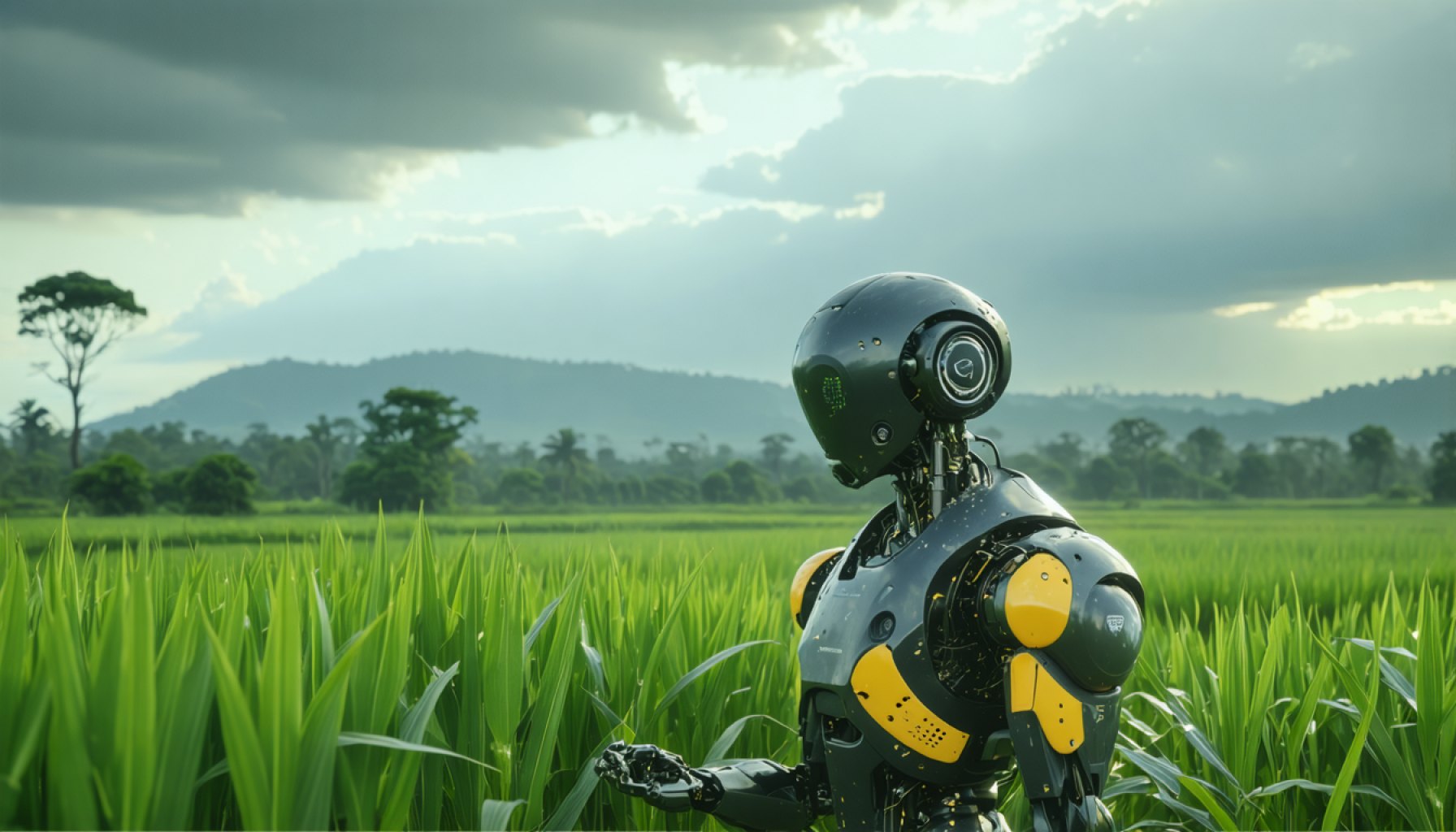- The future of African agriculture is highlighted by digital transformation, focusing on AI and mobile technology advancements.
- Digital agriculture is revolutionizing farm management, enabling real-time data use for informed decision-making.
- AI tools, including predictive analytics and drones, enhance productivity and sustainability in farming practices.
- This technological shift aims to boost efficiency and resilience while addressing climate change impacts.
- For African farmers, harnessing these advancements is crucial for integrating technology with nature, fostering sustainable development.
Amidst the bustling energy of UM6P’s Science Week, the future of agriculture in Africa took center stage. Shimmering fields of innovation unfolded as experts delved into the digital transformation gripping the continent’s farmlands. The spotlight shone brightly on the fusion of artificial intelligence and mobile technology that promises to redefine farming practices.
Vast landscapes, historically reliant on traditional techniques, now find themselves on the cusp of a technological revolution. Digital agriculture, with its precise algorithms and smart devices, is drawing a new blueprint for farm management. Imagine African farmers wielding smartphones, their screens alive with real-time data on crop health and soil nutrients. This integration empowers them to make informed decisions faster and more accurately than ever before.
One cannot overlook the power of AI in this dynamic shift. From predictive analytics that forecast weather patterns to drones mapping out fields, technology is extending a helping hand to farmers, large and small. These tools not only enhance productivity but also ensure sustainability, a pressing need in the face of climate change.
The key takeaway is clear: as these digital tendrils weave through agriculture, they carry with them the promise of increased efficiency and resilience. The conversation has just begun, but the excitement is palpable.
For African farmers, this isn’t merely about keeping pace with global advancements; it’s about carving a future where technology and nature coexist in harmony, nurturing both the land and its people. The fields of Africa are awakening to a new dawn, painted with possibilities as vast as the continent itself.
The Tech-Driven Renaissance: How AI and Smartphones are Transforming African Agriculture
How-To Steps & Life Hacks: Embracing Digital Agriculture
Step 1: Integrate Mobile Technology
Equip yourself with a smartphone and download agriculture-focused apps like FarmLogs or TaroWorks to monitor farm activities.
Step 2: Utilize AI Tools
Adopt AI-driven solutions like IBM Watson Decision Platform for Agriculture that offer predictive analytics concerning weather and pest threats.
Step 3: Implement Smart Devices
Consider using IoT devices such as soil sensors that help in measuring soil health and moisture levels.
Step 4: Explore Drone Technology
Use drones for precision agriculture tasks such as field mapping and crop monitoring.
Life Hack:
Collaborate with local tech startups that specialize in agricultural technology to get custom solutions that fit the unique needs of your landscape.
Real-World Use Cases
1. Precision Farming in Kenya: Farmers using satellite data and AI algorithms have seen a 40% increase in yield and a 50% reduction in water usage.
2. Drones in Nigeria: Drones equipped with multispectral imaging have improved crop spraying by up to 20% in terms of efficiency and coverage.
3. Mobile Data in Ghana: Mobile technology facilitates access to market prices and crop advice via SMS, helping farmers in remote areas to negotiate better prices.
Market Forecasts & Industry Trends
The digital agriculture market in Africa is projected to grow at a CAGR of over 15% from 2023 to 2028. Experts attribute this growth to increased smartphone penetration and internet access in rural areas, alongside government push for smart agriculture initiatives.
Reviews & Comparisons
Pros:
– Enhanced decision-making through real-time data.
– Increased productivity and crop yields.
– Better climate resilience through predictive models.
Cons:
– High initial setup cost for advanced technologies.
– Digital divide in remote areas with limited connectivity.
– Resistance to change from traditional practices.
Controversies & Limitations
A recurring concern is the digital divide that widens gaps between well-connected areas and remote regions lacking basic internet. Additionally, ethical concerns regarding data privacy of smallholder farmers persist, emphasizing the need for regulated data sharing norms.
Features, Specs & Pricing
– Smartphone Apps: Range from free to monthly subscriptions ($5-$30/month).
– AI Tools: Software costs vary widely, depending on functionality ($1000 – $5000/year).
– Drones: Entry-level drones for agriculture start at $500, while advanced versions may cost upwards of $2,000.
Security & Sustainability
Data security remains a priority, with robust encryption and secure cloud storage being essential. Sustainable agriculture practices encouraged by digital tools help in reducing chemical use and promote resource conservation.
Insights & Predictions
Experts predict a shift towards more collaborative platforms where farmers can share data and best practices seamlessly. Partnerships between tech companies and agricultural cooperatives will likely flourish.
Tutorials & Compatibility
Many learning platforms, such as Coursera and LinkedIn Learning, offer courses on agricultural technology integration. Ensure compatibility of apps and devices with existing systems for a smoother transition.
Actionable Recommendations
1. Start Small: Begin with affordable smartphone apps and gradually scale up to more advanced technologies.
2. Seek Training: Engage with platforms like e-learning courses to upskill yourself and your team in digital agriculture.
3. Pilot Programs: Test new technologies on a smaller field before full-scale implementation.
4. Network: Join online forums and local groups to stay updated on the latest technology trends.
For more updates and resources on agriculture innovation, visit UN and FAO.
